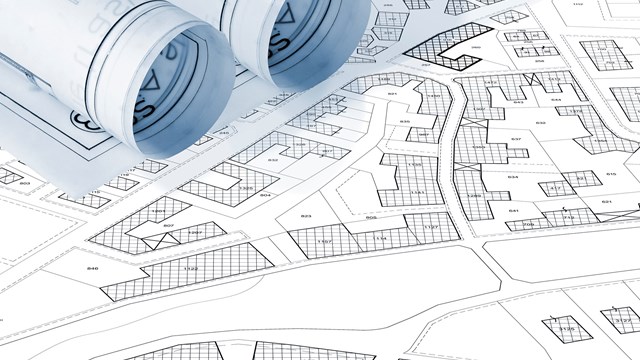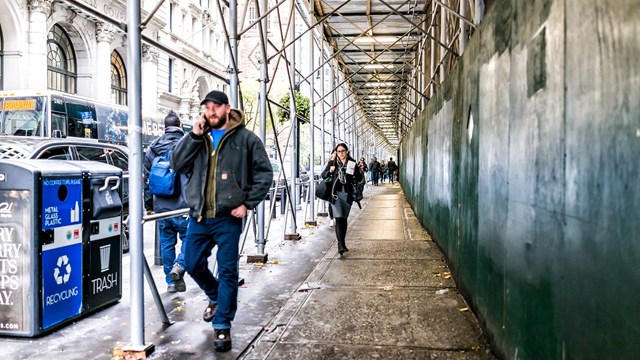With all the recent concern over environmental hazards in residential buildings - mold, funguses, and various allergens - it makes good sense to discuss one of the most dangerous of the invisible problems that can plague a home or building: carbon monoxide, or - to use the chemical abbreviation - CO.
Carbon monoxide, which is invisible and odorless, can accumulate slowly or very rapidly, causing building residents to sicken - or worse. Carbon monoxide originates from the incomplete burning of such materials as gasoline, natural gas, kerosene, liquid petroleum, oil, charcoal, coal, wood, and tobacco. The gas prevents the body from using oxygen efficiently and eventually can cause asphyxiation. Prolonged CO exposure results in headache, loss of alertness, and such flu-like symptoms as nausea, fatigue, fast breathing, confusion, disorientation, and overall weakness. In addition, it can cause chest pain in people with heart disease. The longer a person breathes CO, the worse its effects become. It is estimated that around 200 people die each year from CO exposure.
Poorly ventilated and maintained buildings, as well as the close proximity of certain residential areas to major highways and tunnels, pose an increasing threat of CO infiltration. Buildings must be able to "breathe" and ventilate properly. Building managers should perform diligent maintenance on the equipment necessary for that to happen. However, if one does encounter a CO buildup, the problem is relatively simple to remediate, even prevent, unlike such airborne pollutants and allergens as molds and funguses.
Legislative measures to regulate the detection of carbon monoxide have been introduced in years past and continue to be proposed. In August 2002, the City Council proposed Intro 251, a local law that would amend the administrative code to require installation of carbon monoxide detection devices in certain multiple family residential dwellings. The bill was referred to the Committee on Housing and Buildings but no action has yet been taken, according to a council spokesman.
On the state level, the Assembly took action last year and Governor George Pataki signed legislation in July 2002 requiring that CO detectors be installed in all new residential construction and in all single-family homes, co-ops and condominiums sold in New York State after March 6. This bill does not apply however to the five boroughs of New York City. The city council's bill, if enacted, would affect New York City dwellings, according to Attorney Albert Pennisi, a senior partner with Pennisi, Daniels and Norelli.
Buildings Have to Breathe, Too
Craig Berlin, president of ChuteMaster Indoor Environmental Inc., a Union, New Jersey-based company, cites the energy crisis as a particular juncture in time at which the breathability of many buildings began to decrease. "After more efficient windows came into play back in the energy shortage, it caused more people to begin sealing up their buildings," he says. "When the energy crisis came and the prices went through the roof, everybody started installing sealing windows - buildings used to breathe."
Now, Berlin says, they don't exhaust as well. He stresses the importance of gasses having some means of escape and dissipation and recommends having a National Air Duct Cleaners Association (NADCA) certified company routinely clean out and perform maintenance on your building's ventilation system to prevent a potentially dangerous buildup.
Congested highways, tunnels and bridges are another factor placing New Yorkers at an increased risk of CO poisoning. "New York City is prone to congested highways," Berlin says. "We build right on top of our tunnels and our bridges. Problems arise when they back up at toll plazas, resulting in heavy concentrations of car exhaust that become stagnant, as opposed to living outside of a free-flowing highway, where there's enough activity for the toxic fumes to dissipate."
Berlin cites the pastor tunnels of the FDR on the East River as an example. "There are residential homes right on top of the tunnel," he points out. "When the FDR shuts down because something's backed up, those cars are just sitting there, those fumes just sit there, and the concentration levels get horrendous." That, he stresses, is why proper maintenance of a building's ventilation system is so important.
Brad Mullner, a project manager for Manhattan-based JLC Environmental agrees and says that areas above parking garages are especially susceptible to CO fumes. Of course, there are a couple of parts per million floating naturally in the atmosphere on any given street. And just idling a car's exhaust will create upwards of 100 parts per million (ppm) of carbon monoxide, for example. And when it's concentrated in a garage or around a highway, that's when a problem may be most evident, he says.
"The problem is you can't see it, you can't smell it since it's an odorless gas," says Mullner.
When it comes to how often the system should be serviced, Berlin says "it really depends on the building. But obviously any complaint should be looked upon as important." He describes it as a crucial event in the building's history that should be documented and dealt with accordingly. At the very least, he continues, a professional should be brought in to assess the situation for the building's liability.
"The one sure way to have a problem in the building is to ignore it," Berlin points out. "It's been our experience that even with things as simple as cooking odors in buildings, when management chooses to ignore things like that, they take on a life of their own. It really needs to be looked at professionally." In most cases, he observes, the problem is either correctable or not as harmful as people might perceive it to be.
Some background levels of CO in the home are to be expected. A house with a properly working gas furnace, for example, may have a CO concentration of 1-2 ppm. Having all four gas burners on the stove on for 20 minutes may cause the level to rise to 35 to 120 ppm. A furnace that isn't operating correctly can raise the level to 1,000 ppm, which is a high enough concentration to cause death in a matter of hours.
Preventative practices and use of the proper equipment can stop CO accumulation before it begins. "Sometimes the answer is very basic and simple," Berlin says. "Sometimes it's as simple as a combination, and a combination is the best way to attack it." He says the majority of buildings in Manhattan are equipped with roof fans that have been rendered inoperable for years, and therefore the exhaust system is not pulling gasses up through the air vents properly. Repairing the fan and getting the correct draw in the building, he says, will only cost about $200.
It's also important, he points out, that the fans are designed to exhaust correctly. Sometimes something external, like construction debris that has been tossed into the vents, can affect their performance. Those blockages cause accumulation, stagnation, and decreased draw. "It really is a combination of looking through the system," Berlin reiterates. "We offer evaluation through the use of cameras if necessary. We have cameras that we snake down there and take videotape, which we can show to the board." Those cameras show obstructions and the degree of dirt buildup, but CO does not register.
A true CO test requires leaving sensors and calling in an independent lab to evaluate the results, which becomes quite expensive. The easiest way to get around that, Berlin says, is to ensure that the buildings are well vented and the equipment that is in place is working. Sometimes, he continues, barring such specific outdoor problems as a badly-placed garage or business underneath the building, or locality to a traffic situation, the answer is even simpler. If a specific problem exists, a designer might have to be brought in to assess the situation and either add an extra system or correct the one that's already there.
Sometimes carbon monoxide is a byproduct of a faulty burner or boiler and that's where preventative maintenance comes in, according to Mullner. "Nothing is 100 percent fullproof. It's important to check your lines and keep everything maintained."
Periodic testing is vitally important, Berlin adds. "If we feel that there's a need, a detectable odor or a possibility of something that can be harmful, we'll call in an independent testing firm." He says the best way of going about that is by working with independent contractors that don't have an interest in cleaning or repairing. That method, he claims, is beneficial not only for liability purposes but also for matters of integrity. Trusting everything to one company can become problematic.
An assessment of the situation needn't be costly. A very basic investigation into the dampers, the sanitary conditions inside vents, the draw and the roof-fan conditions is usually complimentary, with more in-depth, exhaustive assessments costing a few hundred dollars. For liability reasons, many management companies prefer to have the investigators call in, and even if everything checks out they seek a letter stating that. Then if a situation does arise, the management can show that it acted in a responsible manner.
When seeking a company to perform either maintenance or testing, your best bet is a certified or professional firm, particularly one that is certified by the NADCA. "What a certified company from the NADCA assures you of . . . is that it shows a commitment from the company that a certain level of training has gone into that particular company or the people that are overseeing that project," Berlin says. Certified companies require exams and education, which assures the client of someone who has the necessary technical background.
In most cases a building will not have to be evacuated or shut down if high CO levels show up. "Unlike mold and situations like that, the source of the CO is usually very evident," Berlin explains. "And it's a situation that's easily corrected by either stopping whatever it is if it's ... a machine ... or to treat it right at its source." He says he has never seen a building that had to be evacuated or a case of indoor airsickness where the residents could not identify the source of the problem. "The causes of CO are really pretty evident once investigated - think about the corrective measures. Mold you have to treat; CO you have to air the building out and let it dissipate."
Berlin says that although carbon monoxide is not a relatively recent concern, "certainly people are much more conscious. It's the losses that you see in the paper that really trigger an awareness, and the awareness is what's important." He says his company has been on all the radio and television stations at one time or another to talk about the quality of air and fumes and the importance of a building's ability to breathe. "It's in the public eye," Berlin confirms. So by taking the correct preventative measures, everyone in your building can breathe a little easier.







Comments
Leave a Comment